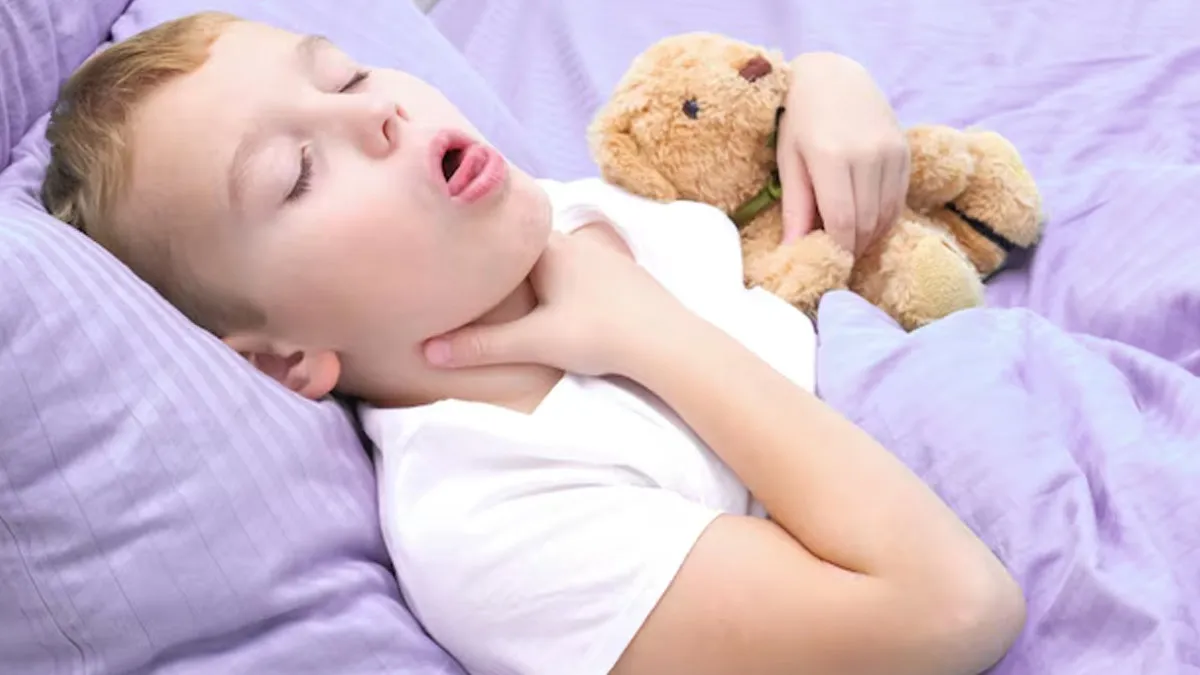
Sleep plays a vital role in your child’s growth, development, and overall well-being. However, for some children, a hidden condition called paediatric sleep apnoea can disrupt this crucial process, affecting their health and behaviour in ways that might not be immediately obvious.
Table of Content:-
In an interaction with the OnlyMyHealth team, Dr Sanjay Manchanda, Chairperson, Sleep Medicine, Sir Ganga Ram Hospital, New Delhi, explains how parents can spot early signs of this condition and take the necessary steps to address it.
RELATED: Are You Suffering From Sleep Apnoea? 10 Things That Can Exacerbate This Condition
What Is Paediatric Sleep Apnoea?

Paediatric sleep apnoea is a sleep disorder where a child’s breathing stops and starts repeatedly during sleep. These interruptions, known as apnoeas, can last for several seconds and happen multiple times a night.
There are two main types of paediatric sleep apnoea,
Obstructive Sleep Apnoea (OSA): The more prevalent type of sleep apnoea is brought on by excessive relaxation of the muscles at the back of the throat, which causes the airway to partially or totally collapse.
Central Sleep Apnoea: This less prevalent type is brought on by a breakdown in connection between the brain and the breathing muscles.
According to Dr Manchanda, paediatric sleep apnoea can develop at any age, even in very young children. “It’s a condition that can be present as early as one or two years of age, and it persists across all age groups,” he says.
Surprising Signs Parents Should Look Out For
Children with sleep apnoea often display a range of symptoms, many of which are noticeable during their daily routines or bedtime. Dr Manchanda highlights some of the most common signs,
Mouth Breathing- Most children breathe with their mouth at times but if your child habitually breathes through their mouth, this could be an early indicator.
Physical Characteristics- Enlarged tonsils or adenoids are common in children with sleep apnoea. Other physical traits might include a long, thin face (adenoid facies), a receding chin (retrognathia), or a smaller lower jaw (micrognathia).
Snoring And Restless Sleep- Frequent tossing and turning, snoring, or waking up multiple times a night are all signs of disrupted sleep.
Daytime Drowsiness In School- Children might struggle to stay awake in school or appear unusually fatigued during the day. This can impact their school activities and attract attention from teachers. This can be a significant indicator of sleep apnoea.
Growth Problems- “Sleep apnoea disrupts deep sleep, which is crucial for growth hormone production,” says Dr Manchanda. “As a result, affected children may experience stunted growth.”
Frequent Infections- Recurring sore throats or respiratory infections can also be linked to sleep apnoea. “They are more prone to sore throats and infections”, says Dr Manchanda.
Why Does Early Diagnosis Matter?

Left untreated, paediatric sleep apnoea can lead to complications such as behavioural issues, difficulty concentrating, poor academic performance, and developmental delays. The good news is that diagnosing the condition is straightforward.
Our expert explains, “A sleep study is where we see the nasal airways, where we see how many stoppages of breath are occurring, how long they are, what is the heart rate variability, what is the oxygen saturation in the blood, and the pulse variation.”
As far as treatment is concerned, Dr Manchanda advises that for most children, treatment involves removing enlarged tonsils and adenoids. “These are often the main culprits causing airway obstruction. Removing them usually resolves the condition effectively,” he explains.
Takeaway
Paediatric sleep apnoea can feel overwhelming, but with awareness and timely intervention, parents can help their children reclaim restful sleep and enjoy better health. If your child exhibits any of the symptoms mentioned above, it’s worth consulting a doctor or sleep specialist. This seemingly trivial routine plays a major role in your child’s further development and health. Socially, it plays a major role in your child’s school activities and thus in their overall interpersonal development. Recognise these signs before it is too late.
Also watch this video
Read Next
Warning Signs Of Mental Health Issues In Kids That Parents Shouldn’t Ignore And Address Immediately
How we keep this article up to date:
We work with experts and keep a close eye on the latest in health and wellness. Whenever there is a new research or helpful information, we update our articles with accurate and useful advice.
Current Version